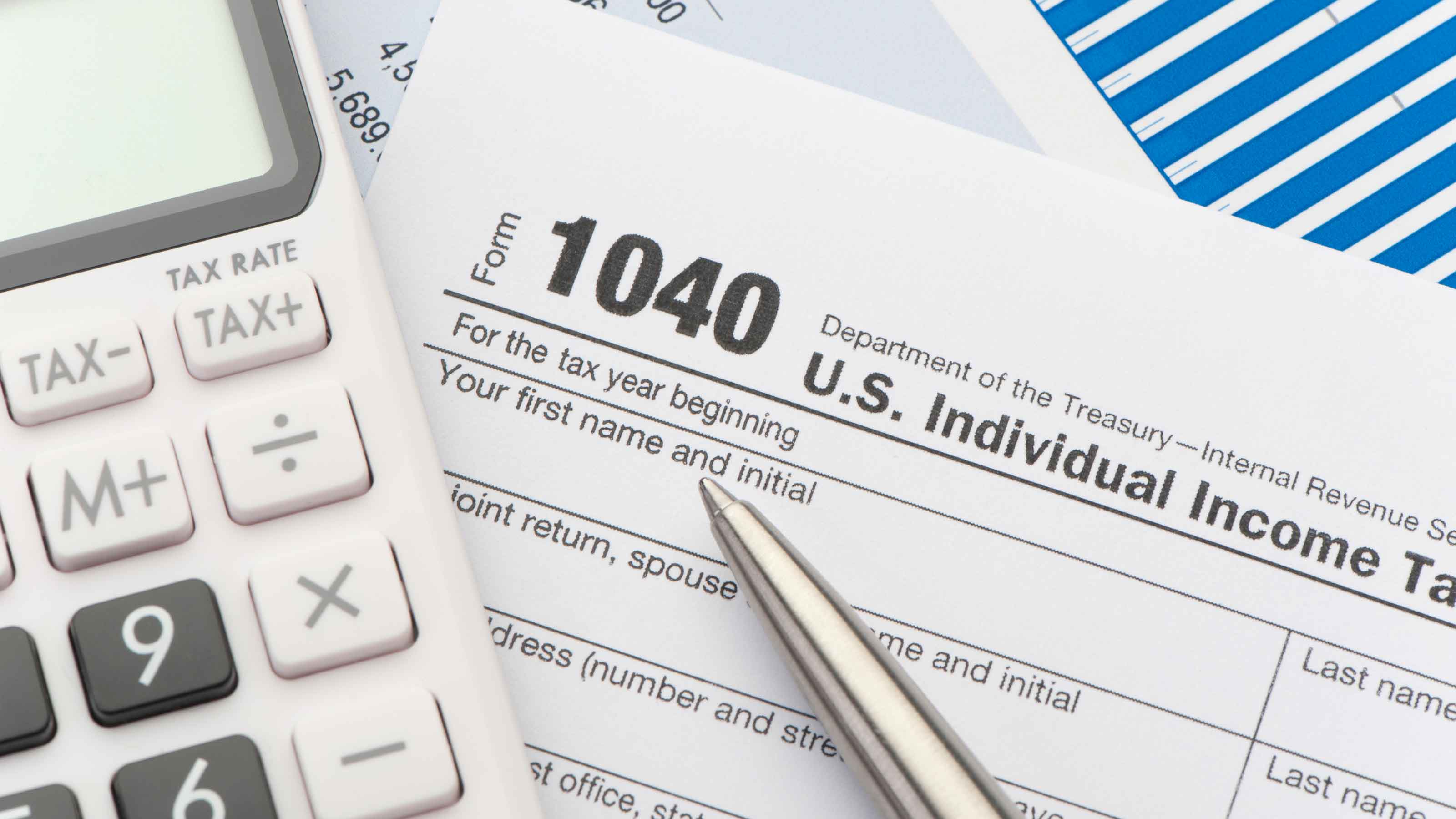Capital Gains: Take the Money And Run
With a volatile market, it's time to crunch the numbers to see how you can come out ahead.
By Shelly K. Schwartz, Special to CNBC.com

Leftover losses from 2008 and the threat of higher taxes in the coming year could inspire more investors to harvest higher-than-usual capital gains before the end of the 2009.
Indeed, seasoned investors have been taking advantage of this rule to minimize taxes on investment income for years, selling losing assets such as stocks and bonds to offset the profits of other ones, but the enormous losses of the stock market meltdown of 2008-2009 followed by an eight-month rally has created an unusual situation.

Sign up for Kiplinger’s Free E-Newsletters
Profit and prosper with the best of expert advice on investing, taxes, retirement, personal finance and more - straight to your e-mail.
Profit and prosper with the best of expert advice - straight to your e-mail.
“Last year [2008] was the first in many where losses were prevalent enough that tax loss harvesting was common,” says Bob Adams, a certified financial planner with Armstrong Retirement Planning in Cupertino, Calif. “Those who did so now have the opportunity to balance gains this year.”
If, after realizing all your gains and losses for the year, you end up with a net loss you can use up to $3,000 to offset earned (or ordinary) income. Any loss in excess of that amount can be “carried forward” to offset future capital gains.
Needless to say, there are more than a few investors sitting on such losses today, leftovers from the bear market, which can be applied toward current-year gains.
At the same time, of course, most investors are keenly aware that the Obama administration has proposed raising the capital gains tax rate for high income individuals from 15 percent to at least 20 percent -- some believe higher -- by 2011, which may prompt some to sell appreciated stocks while rates remain low, says Mark Luscombe, principal tax analyst for CCH tax services firm in Riverwoods, Ill.
“That may cause some people to want to realize gains in anticipation,” he says. “From a tax point of view the ideal is to have a net capital loss for the year of $3,000 because that’s what you can offset against other income.”
The threat of higher capital gains taxes in the coming years, of course, might also have the opposite effect, prompting some investors to dump some of their dogs and bank those losses this year for use against gains in the higher tax rate years ahead.
“If you have a [paper] loss in a current investment you might want to realize that loss this year in order to balance it against gains in future years,” says Adams, who notes that tax loss harvesting can be done any time during the year, not just at year-end.
The capital gains equation may be all the more important for those people who expect their ordinary income (wages or salary) to be flat or lower in the years ahead and/or are facing the prospect of a higher income tax rate.
Making Losses Count
Though capital-gain-and-loss harvesting is fairly common tax management, it is also complex, requiring careful planning and above all else, a willingness to sell stocks, which for some investors is not as simple as it seems
After all, tax laws only recognize real gains and losses on assets that are actually sold during the year. Paper gains and losses don’t count.
“You have to know the rules, know the tax status of your investments and be willing to sell,” says Luscombe.
Many investors, for instance, are reluctant to admit they made a mistake, so instead of selling a losing stock they hold onto to it in the hope of breaking even or notching a profit in the future.
“They also may be reluctant to sell a winning stock, even if selling earlier rather than later means they can minimize taxes on their gains,” says Luscombe. “They often have to choose between actions that produce tax advantages and those that maximize investment gains.”
The first consideration is to identify whether an investment qualifies for either a short-term or long-term capital gains status, says CCH, since the IRS requires taxpayers to first balance short-term gains with short-term losses and long-term ones with long-term losses.
(Investments held for 12 months or less are considered short-term and are taxed as ordinary income, which for investors in the upper tax brackets is considerably higher than the capital gains rate.
Assets held for longer than a year are treated as long-term gains and taxed at 15 percent for taxpayers in the 25 percent and higher brackets. Those in the 15- percent or 10-percent brackets are generally taxed at 0 percent for long-term gains.
If you bought various amounts of shares of a given stock at various prices over a period of time, CCH notes you may have both long-term and short-term gains, depending on which lots of shares are sold.
To maximize your tax advantage, CCH notes you’ll have to instruct your broker which shares you want sold.
If you have real losses this year or you’ve carried some forward from a prior year, you should consider two options, says Luscombe.
One is to realize gains to the extent that they can be offset by losses.
The other is to hold on to the short-term assets until they qualify for long-term treatment.
Though tax-efficiency is central to successful investing Luscombe warns investment, not tax considerations, should come first.
“Don’t let the tax tail wag the investment dog. Look over your portfolio from an investor’s point of view and see what you think you want to hold onto or sell,” he says. “If there are assets you want to sell that are currently at a gain, and you have some losses it may make some sense to do that before year-end to absorb some of those losses.”
And in case you think you can have it both ways, the IRS is way ahead of you on that.
If you’re planning to dump a dog for tax purposes, but expect it to rebound in the coming months, be careful about timing the repurchase of that stock or fund.
The so-called Wash Sale Rule bars an individual from claiming a tax-deductible loss on a security if he repurchases the same or a “substantially identical” asset within 30 days of the sale.
Get Kiplinger Today newsletter — free
Profit and prosper with the best of Kiplinger's advice on investing, taxes, retirement, personal finance and much more. Delivered daily. Enter your email in the box and click Sign Me Up.
-
 Stock Market Today: Have We Seen the Bottom for Stocks?
Stock Market Today: Have We Seen the Bottom for Stocks?Solid first-quarter earnings suggest fundamentals remain solid, and recent price action is encouraging too.
By David Dittman
-
 Is the GOP Secretly Planning to Raise Taxes on the Rich?
Is the GOP Secretly Planning to Raise Taxes on the Rich?Tax Reform As high-stakes tax reform talks resume on Capitol Hill, questions are swirling about what Republicans and President Trump will do.
By Kelley R. Taylor
-
 Kiplinger's Tax Map for Middle-Class Families: About Our Methodology
Kiplinger's Tax Map for Middle-Class Families: About Our Methodologystate tax The research behind our judgments.
By David Muhlbaum
-
 Retirees, Make These Midyear Moves to Cut Next Year's Tax Bill
Retirees, Make These Midyear Moves to Cut Next Year's Tax BillTax Breaks Save money next April by making these six hot-as-July tax moves.
By Rocky Mengle
-
 Estimated Payments or Withholding in Retirement? Here's Some Guidance
Estimated Payments or Withholding in Retirement? Here's Some GuidanceBudgeting You generally must pay taxes throughout the year on your retirement income. But it isn't always clear whether withholding or estimated tax payments is the best way to pay.
By Rocky Mengle
-
 How to Cut Your 2021 Tax Bill
How to Cut Your 2021 Tax BillTax Breaks Our guidance could help you claim a higher refund or reduce the amount you owe.
By Sandra Block
-
 Why This Tax Filing Season Could Be Ugly
Why This Tax Filing Season Could Be UglyCoronavirus and Your Money National Taxpayer Advocate Erin M. Collins warns the agency will continue to struggle with tight budgets and backlogs. Her advice: File electronically!
By Sandra Block
-
 Con Artists Target People Who Owe The IRS Money
Con Artists Target People Who Owe The IRS MoneyScams In one scheme, thieves will offer to "help" you pay back taxes, only to leave you on the hook for expensive fees in addition to the taxes.
By Rivan V. Stinson
-
 Cash-Rich States Lower Taxes
Cash-Rich States Lower TaxesTax Breaks The economic turnaround sparked a wave of cuts in state tax rates. But some say the efforts could backfire.
By Sandra Block
-
 The Financial Effects of Losing a Spouse
The Financial Effects of Losing a SpouseFinancial Planning Even amid grief, it's important to reassess your finances. With the loss of your spouse's income, you may find yourself in a lower tax bracket or that you qualify for new deductions or credits.
By Rocky Mengle